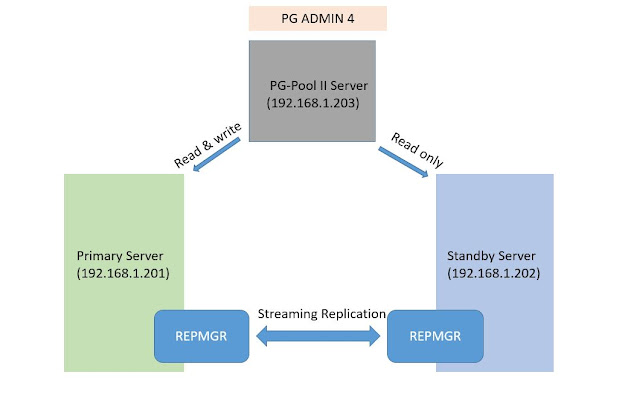PL/PGSQL Function
PostgreSQL CREATE
FUNCTION Statement:
Syntax:
CREATE FUNCTION
function_name(p1 type, p2 type)
RETURNS type AS
BEGIN
-- logic
END;
LANGUAGE language_name;
Must follow:
First,
specify the name of the function aftr the CREATE FUNCTION
keywords.
Then, put a comma-separated
list of parameters inside the parentheses following the function name.
Next, specify the return
type of the function after the RETURNS keyword.
After that, place the code
inside the BEGIN and END block. The function
always ends with a semicolon (;) followed by the END keyword.
Finally, indicate the
procedural language of the function e.g., plpgsql in case PL/pgSQL
is
Example:
CREATE FUNCTION inc(val
integer) RETURNS integer AS $$
BEGIN
RETURN val + 1;
END; $$
LANGUAGE
PLPGSQL;
PL/pgSQL Function
Parameters:
Four types of function parameters
IN parameters
OUT parameters
INOUT parameters
VARIADIC parameters
PL/pgSQL IN
parameters
CREATE OR REPLACE FUNCTION
get_sum(
a NUMERIC,
b NUMERIC)
RETURNS NUMERIC AS $$
BEGIN
RETURN a + b;
END; $$
LANGUAGE plpgsql;
The
get_sum() function
accepts two parameters: a, and b and returns a
numeric. The data types of the two parameters
are NUMERIC. By default, the parameter’s type of any parameter in PostgreSQL is
IN parameter. You
can pass the IN parameters to
the function but you cannot get them back as a part of the result.
SELECT
get_sum(10,20);
PL/pgSQL OUT parameters:
The OUT
parameters are defined as part of the function arguments list and are returned
back as a part of the result. PostgreSQL supported the OUT parameters since
version 8.1
Input:
CREATE OR REPLACE FUNCTION
hi_lo(
a NUMERIC,
b NUMERIC,
c NUMERIC,
OUT hi NUMERIC,
OUT lo NUMERIC)
AS $$
BEGIN
hi := GREATEST(a,b,c);
lo := LEAST(a,b,c);
END; $$
LANGUAGE plpgsql;
Output:
The hi_lo
function accepts 5 parameters:
Three IN parameters: a, b, c.
Two OUT
parameters: hi (high) and lo (low).
Inside
the function, we get the greatest and least numbers of three IN parameters using GREATEST and LEAST built-in functions. Because we use the OUT parameters, we don’t need to have a RETURN tatement. The OUT parameters are
useful in a function that needs to return multiple values without
defining a custom type.
The following statement
calls the hi_lo function:
SELECT
hi_lo(10,20,30);
PL/pgSQL INOUT parameters:
The
INOUT parameter is the combination IN
and OUT parameters. It means that the caller can pass the value
to the function. The function then changes the argument and passes the value
back as a part of the result.
The following example shows
you the square function that accepts a number and returns the
square of that number.
Input:
CREATE OR REPLACE FUNCTION
square(
INOUT a NUMERIC)
AS $$
BEGIN
a := a * a;
END; $$
LANGUAGE plpgsql;
Output:
SELECT square(4);
PL/pgSQL VARIADIC parameters:
A
PostgreSQL function can accept a variable number of arguments with one
condition that all arguments have the same data type. The arguments are passed
to the function as an array. See the following example:
Input:
CREATE OR REPLACE FUNCTION
sum_avg(
VARIADIC list NUMERIC[],
OUT total NUMERIC,
OUT average NUMERIC)
AS $$
BEGIN
SELECT INTO total
SUM(list[i])
FROM
generate_subscripts(list, 1) g(i);
SELECT INTO average
AVG(list[i])
FROM generate_subscripts(list,
1) g(i);
END; $$
LANGUAGE
plpgsql;
The sum_avg()
function accepts a list of numbers, calculates the total and average, and
returns both values.
SELECT
* FROM sum_avg(10,20,30);


Comments
Post a Comment